
The Enchanting Jewish Quarter of Budapest
Explore the Jewish Quarter in Budapest: A captivating blend of history, culture, and modern charm, featuring Europe's largest synagogue, lively ruin bars, and culinary delights.
Nestled in the heart of Budapest, the Jewish Quarter is a vibrant neighborhood brimming with history, culture, and modern charm. This atmospheric district, historically known as Erzsébetváros, is a testament to the enduring spirit and resilience of the Jewish community in Hungary. Walking through its narrow streets, you'll find a captivating blend of old and new, where ancient synagogues stand beside trendy ruin bars and chic boutiques. The Jewish Quarter is home to the Great Synagogue, the largest in Europe and a must-see for any visitor. This awe-inspiring structure, with its striking Moorish Revival architecture, also houses the Jewish Museum and the Holocaust Memorial. Nearby, the Kazinczy Street Synagogue, an exquisite example of Art Nouveau design, offers a glimpse into the rich cultural heritage of the area. But the Jewish Quarter is not just about its past; it is a lively hub of contemporary culture and nightlife. The district is famous for its ruin bars, unique establishments set in abandoned buildings and courtyards. These bars, such as Szimpla Kert and Instant, are adorned with eclectic décor and offer a vibrant atmosphere where you can enjoy live music, art installations, and a diverse range of drinks. Culinary enthusiasts will delight in the myriad of dining options available in the Jewish Quarter. From traditional Hungarian fare to modern fusion cuisine, the neighborhood boasts a variety of restaurants, street food stalls, and cafes. Be sure to try local delicacies like goulash, chimney cake, and the famous kosher pastries. For those interested in art and shopping, the Jewish Quarter offers an array of galleries, antique shops, and designer boutiques. The district also hosts numerous cultural events and festivals throughout the year, ensuring there's always something exciting happening. Whether you're a history buff, a foodie, or a nightlife aficionado, the Jewish Quarter in Budapest promises an unforgettable experience.
Local tips in Jewish Quarter
- Visit the Great Synagogue early in the morning to avoid crowds and fully appreciate its architectural beauty.
- Don't miss the ruin bars – they offer a unique nightlife experience you won't find anywhere else.
- Try local street food at the Kazinczy Street Food Market for a taste of authentic Hungarian flavors.
- Wear comfortable shoes, as the best way to explore the Jewish Quarter is on foot.
- Check out the district's cultural calendar for festivals and events during your visit.
The Enchanting Jewish Quarter of Budapest
Nestled in the heart of Budapest, the Jewish Quarter is a vibrant neighborhood brimming with history, culture, and modern charm. This atmospheric district, historically known as Erzsébetváros, is a testament to the enduring spirit and resilience of the Jewish community in Hungary. Walking through its narrow streets, you'll find a captivating blend of old and new, where ancient synagogues stand beside trendy ruin bars and chic boutiques. The Jewish Quarter is home to the Great Synagogue, the largest in Europe and a must-see for any visitor. This awe-inspiring structure, with its striking Moorish Revival architecture, also houses the Jewish Museum and the Holocaust Memorial. Nearby, the Kazinczy Street Synagogue, an exquisite example of Art Nouveau design, offers a glimpse into the rich cultural heritage of the area. But the Jewish Quarter is not just about its past; it is a lively hub of contemporary culture and nightlife. The district is famous for its ruin bars, unique establishments set in abandoned buildings and courtyards. These bars, such as Szimpla Kert and Instant, are adorned with eclectic décor and offer a vibrant atmosphere where you can enjoy live music, art installations, and a diverse range of drinks. Culinary enthusiasts will delight in the myriad of dining options available in the Jewish Quarter. From traditional Hungarian fare to modern fusion cuisine, the neighborhood boasts a variety of restaurants, street food stalls, and cafes. Be sure to try local delicacies like goulash, chimney cake, and the famous kosher pastries. For those interested in art and shopping, the Jewish Quarter offers an array of galleries, antique shops, and designer boutiques. The district also hosts numerous cultural events and festivals throughout the year, ensuring there's always something exciting happening. Whether you're a history buff, a foodie, or a nightlife aficionado, the Jewish Quarter in Budapest promises an unforgettable experience.
Iconic landmarks you can’t miss
Fisherman's Bastion
Discover the enchanting Fisherman's Bastion in Budapest, a neo-Romanesque marvel with stunning views and rich historical significance.
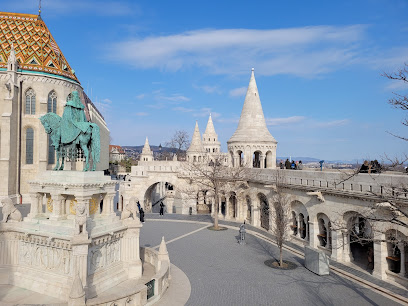
Heroes' Square
Explore the grandeur of Heroes' Square in Budapest, a monumental tribute to Hungary's history and culture, featuring stunning statues and a rich heritage.

Soviet War Memorial
Explore the Soviet War Memorial in Budapest, a historical landmark honoring the sacrifices of World War II soldiers, surrounded by the vibrant atmosphere of Szabadság tér.

Kazinczy Street Synagogue
Explore the striking Kazinczy Street Synagogue, a key landmark in Budapest's Jewish Quarter, rich in history and stunning architecture.

Hungarian Jewish Museum and Archives
Explore the Hungarian Jewish Museum and Archives for an enriching journey through Jewish history and culture in the heart of Budapest.

Raoul Wallenberg Holocaust Memorial Park
Visit Raoul Wallenberg Holocaust Memorial Park in Budapest for a moving tribute to resilience, history, and the importance of remembrance.

Ghetto Memorial Wall
Explore the Ghetto Memorial Wall in Budapest, a profound tribute to the Jewish community's resilience during World War II, nestled in the vibrant Jewish Quarter.

Carl Lutz Memorial
Explore the Carl Lutz Memorial in Budapest, a profound tribute to humanitarianism during the Holocaust, located in the vibrant Jewish Quarter.

Mediaeval Jewish Chapel
Explore the Mediaeval Jewish Chapel, a historical gem in Budapest's Buda Castle that reflects the rich Jewish heritage.

Heart on the wall
Explore the Heart on the Wall, a stunning street art installation in Budapest's District VII, showcasing the city's vibrant culture and creativity.

Unmissable attractions to see
Dohány Street Synagogue
Explore the grandeur of the Dohány Street Synagogue, the largest synagogue in Europe, a symbol of Jewish heritage and resilience in Budapest's vibrant Jewish Quarter.

Museum Garden
Explore Museum Garden, a serene park in Budapest adjacent to the National Museum, perfect for relaxation and cultural immersion.
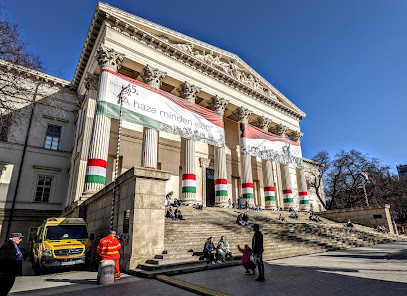
Kazinczy Street Synagogue
Discover the architectural splendor and rich history of the Kazinczy Street Synagogue, a must-visit spiritual and cultural landmark in Budapest's Jewish Quarter.

Hungarian Jewish Museum and Archives
Discover the deep-rooted heritage and vibrant history of Hungarian Jewry at the Hungarian Jewish Museum and Archives in Budapest.

Raoul Wallenberg Holocaust Memorial Park
Explore Raoul Wallenberg Holocaust Memorial Park in Budapest - a serene tribute to bravery and humanity amidst a poignant historical narrative.

Ghetto Memorial Wall
Explore the Ghetto Memorial Wall, a poignant tribute in Budapest's Jewish Quarter that honors resilience and remembrance amidst vibrant culture.

Carl Lutz Memorial
Explore the Carl Lutz Memorial in Budapest, a touching tribute to a hero of the Holocaust, nestled in the historic Jewish Quarter of the city.

Murals
Explore the vibrant murals of Budapest on Kazinczy Street, where street art meets urban culture in a colorful display of creativity.

Budapest Jewish Walk
Discover the profound stories and vibrant culture of Budapest's Jewish heritage on an unforgettable guided walk through the historic Jewish Quarter.
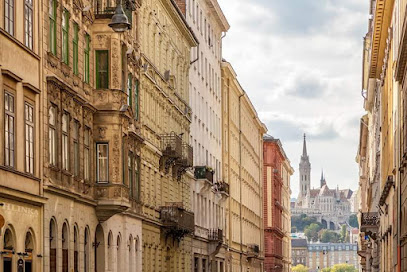
Heart on the wall
Discover 'Heart on the Wall' in Budapest, a vibrant tourist attraction that embodies the city's artistic spirit and romantic ambiance.

Essential places to dine
Mazel Tov
Discover the flavors of the Mediterranean at Mazel Tov in Budapest's historic Jewish Quarter – where culinary tradition meets modern dining.

Dobrumba
Experience authentic Middle Eastern cuisine at Dobrumba in Budapest's Jewish district - where every dish tells a story.

Tuning Bar&Burger
Experience culinary creativity at Tuning Bar&Burger in Budapest—where gourmet burgers meet vibrant nightlife.

Barack és Szilva étterem
Discover authentic Hungarian cuisine at Barack és Szilva Étterem – where tradition meets modern culinary artistry in the heart of Budapest.

KönyvBár & Restaurant
Discover KönyvBár & Restaurant: where culinary artistry meets literary charm in Budapest's vibrant dining scene.

Caviar & Bull Budapest
Experience the finest modern European cuisine at Caviar & Bull Budapest, where luxury meets culinary artistry in every dish.
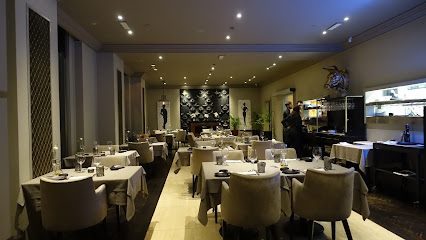
Macesz Bistro
Experience the best of Hungarian cuisine at Macesz Bistro in Budapest's historic Jewish Quarter with a unique blend of tradition and modernity.
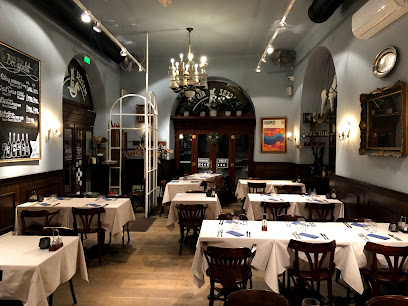
M Restaurant
Experience exquisite French-Hungarian cuisine at M Restaurant in Budapest's lively Jewish Quarter, where every dish tells a story.

Fülemüle Étterem
Discover Fülemüle Étterem in Budapest for authentic Eastern European dishes infused with rich Hungarian heritage.

CHESS RESTAURANT - BUDAPEST
Experience Budapest's culinary charm at Chess Restaurant - where delightful dishes meet a unique chess-themed ambiance.

Markets, malls and hidden boutiques
The Biggest Souvenir Shop-Market in Budapest
Explore a vast array of unique gifts and local crafts at The Biggest Souvenir Shop-Market in Budapest, a treasure trove of Hungarian culture.

Szputnyik shop D20
Explore Szputnyik Shop D20 for unique vintage clothing and accessories in Budapest, where every piece has a story to tell.

WORLD OF SOUVENIR
Explore Budapest's vibrant culture through unique gifts at World of Souvenir, where every treasure tells a story.

Ludovika
Explore Ludovika, Budapest's vintage clothing gem, where timeless fashion and unique finds await every style enthusiast.

Ever After Budapest Vintage & Design Shop
Discover unique vintage clothing and accessories at Ever After Budapest, a treasure trove of fashion in the heart of Hungary's capital.

Szimpla Design Shop
Explore Szimpla Design Shop in Budapest for unique gifts and local crafts that capture the essence of Hungarian culture.

Weinberger Judaica
Discover the rich Jewish heritage at Weinberger Judaica, Budapest's premier destination for religious artifacts and antiques.

Memories of Hungary - Art and Design
Discover unique Hungarian souvenirs at Memories of Hungary, a charming store in the heart of Budapest, perfect for capturing the essence of your travels.

Judapest
Explore Judapest in Budapest, a unique gift shop offering a delightful selection of handmade crafts and authentic souvenirs that capture the spirit of Hungary.

Unique Souvenir
Explore Unique Souvenir in Budapest for authentic Hungarian crafts and unforgettable mementos that capture the essence of your travels.

Essential bars & hidden hideouts
Szimpla Kert
Experience the iconic Szimpla Kert, Budapest's premier ruin bar, where eclectic decor meets vibrant nightlife and cultural creativity.

Instant-Fogas Complex
Discover the heartbeat of Budapest's nightlife at Instant-Fogas Complex, a vibrant bar and nightclub offering unforgettable experiences.

Ruin Bars Budapest
Experience the eclectic charm of Budapest's ruin bars, where history meets vibrant nightlife in the heart of the Jewish Quarter.

Lámpás Student Pub
Experience the vibrant nightlife of Budapest at Lámpás Student Pub, where locals and travelers come together for great drinks and unforgettable memories.

Kisüzem
Experience the vibrant atmosphere of Kisüzem, a cozy pub in Budapest's Jewish Quarter, offering local drinks and live music.

Place Bár
Experience the vibrant nightlife of Budapest at Place Bár, where cocktails, pub fare, and a lively atmosphere create unforgettable moments.
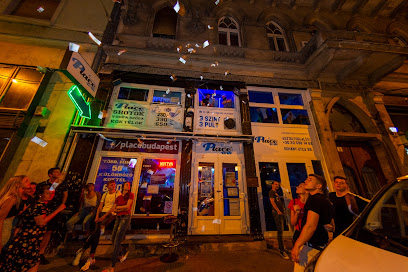
Hotsy Totsy Budapest
Discover Hotsy Totsy, Budapest's premier cocktail bar, where innovative drinks and a stylish atmosphere await you in the heart of the city.

Jardín cocktail Bar
Discover the vibrant atmosphere and creative cocktails at Jardín Cocktail Bar, a must-visit nightlife destination in Budapest.
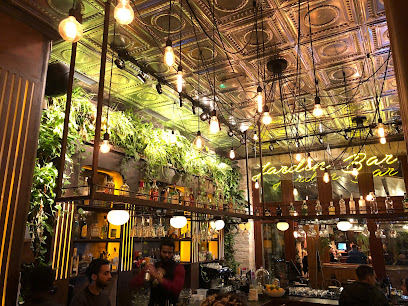
ParaNoir Pub
Experience the vibrant rock culture of Budapest at ParaNoir Pub, where affordable drinks and live music create an unforgettable nightlife experience.

Bar pharma
Discover the vibrant nightlife of Budapest at Bar Pharma, where innovative cocktails and a lively atmosphere await you.

Local Phrases
-
- Helloשלום
[Shalom] - Goodbyeלהתראות
[Lehitraot] - Yesכן
[Ken] - Noלא
[Lo] - Please/You're welcomeבבקשה
[Bevakasha] - Thank youתודה
[Toda] - Excuse me/Sorryסליחה
[Slicha] - How are you?איך אתה?
[Eich Ata?] - Fine. And you?טוב. ואת?
[Tov. Ve'at?] - Do you speak English?האם אתה מדבר אנגלית?
[Ha'Im Ata Medaber Anglit?] - I don't understandאני לא מבין
[Ani Lo Mevin]
- Helloשלום
-
- I'd like to see the menu, pleaseאני רוצה לראות את התפריט, בבקשה
[Ani Rotze Le'raot et Ha'Ta'amit, Bevakasha] - I don't eat meatאני לא אוכל בשר
[Ani Lo Ochel Basar] - Cheers!לחיים!
[Lechayim!] - I would like to pay, pleaseאני רוצה לשלם, בבקשה
[Ani Rotze Leshalem, Bevakasha]
- I'd like to see the menu, pleaseאני רוצה לראות את התפריט, בבקשה
-
- Help!עזור!
[Ezor!] - Go away!לך מכאן!
[Lech Mi'kan!] - Call the Police!תקרא למשטרה!
[Tkara La'Mishtara!] - Call a doctor!תקרא לרופא!
[Tkara La'Rofe!] - I'm lostאני אבוד
[Ani Avud] - I'm illאני חולה
[Ani Choleh]
- Help!עזור!
-
- I'd like to buy...אני רוצה לקנות...
[Ani Rotze Liknot...] - I'm just lookingאני רק מסתכל
[Ani Rak Mestakel] - How much is it?כמה עולה זה?
[Kama Ole Ze?] - That's too expensiveזה יקר מדי
[Ze Yakar M'dai] - Can you lower the price?אתה יכול להוריד את המחיר?
[Ata Yachol Lehored et Ha'Machir?]
- I'd like to buy...אני רוצה לקנות...
-
- What time is it?מה השעה?
[Ma Ha'Sha'a?] - It's one o'clockהשעה חד
[Ha'Sha'a Chad] - Half past (10)חצי (עשר)
[Chatzi (Esre)] - Morningבוקר
[Boker] - Afternoonצהריים
[Tzohorayim] - Eveningערב
[Erev] - Yesterdayאתמול
[Etmol] - Todayהיום
[Ha'Yom] - Tomorrowמחר
[Mahar] - 1אחד
[Echad] - 2שניים
[Shnayim] - 3שלושה
[Shlosha] - 4ארבעה
[Arba'a] - 5חמישה
[Chamisha] - 6ששה
[Shisha] - 7שבעה
[Shiv'a] - 8שמונה
[Shmone] - 9תשעה
[Tish'a] - 10עשרה
[Esreh]
- What time is it?מה השעה?
-
- Where's a/the...?איפה נמצא...
[Eifo Nimtza...] - What's the address?מה הכתובת?
[Ma Ha'Ktovet?] - Can you show me (on the map)?אתה יכול להראות לי (על המפה)?
[Ata Yachol Le'harot Li (Al Ha'Mapa)?] - When's the next (bus)?מתי האוטובוס הבא?
[Matai Ha'Autobus Ha'Ba?] - A ticket (to ....)כרטיס (ל...)
[Kartis (Le...)]
- Where's a/the...?איפה נמצא...
History of Jewish Quarter
-
The Jewish presence in Budapest can be traced back to the late medieval period, but a significant increase in the Jewish population occurred in the 18th century. Following the expulsion of Jews from various parts of Europe, many settled in Buda and Pest, leading to the establishment of vibrant communities. The Jewish Quarter, or Erzsébetváros, began to take shape as a cultural and religious hub, with the construction of synagogues and communal institutions.
-
In 1859, the Dohány Street Synagogue was completed, becoming the largest synagogue in Europe and a symbol of Jewish life in Budapest. The synagogue, designed by Ludwig Förster in the Moorish Revival style, served not only as a place of worship but also as a center for Jewish culture and education. The surrounding Jewish Quarter flourished, with schools, theaters, and businesses establishing a rich cultural landscape.
-
The Jewish Quarter faced devastating challenges during World War II. In 1944, the Nazi occupation led to the establishment of the Budapest ghetto, where thousands of Jews were forcibly confined in brutal conditions. Despite the horrors, the area also became a site of resistance, with individuals and organizations working to save lives. The ghetto was liberated in 1945, but the community had suffered catastrophic losses, significantly impacting Jewish life in Budapest.
-
After the war, the Jewish community in Budapest began to rebuild. However, the post-war communist regime imposed restrictions on religious practices and many Jews emigrated, leading to a decline in the population. The Jewish Quarter, once bustling with life, fell into neglect, and many buildings were abandoned or repurposed. The vibrant culture that had thrived for centuries faced significant challenges.
-
In the 21st century, the Jewish Quarter has experienced a revitalization. Efforts to restore historical buildings, such as the Great Synagogue, have sparked renewed interest in the area. The neighborhood has transformed into a cultural hotspot, with trendy cafes, ruin bars, and art galleries. This revival has reinstated the Jewish Quarter as an essential part of Budapest’s cultural identity, celebrating its rich history while embracing modernity.
Jewish Quarter Essentials
-
The Jewish Quarter is centrally located in Budapest, making it easily accessible from other neighborhoods. You can reach it via public transportation such as the M2 (red) metro line, which has stops at Deák Ferenc tér or Astoria. Trams 4 and 6 also pass nearby along Nagykörút. Buses and taxis are available as well, with rideshare options like Bolt and Uber operating in the city.
-
The Jewish Quarter is best explored on foot, as many attractions are within walking distance. Public transport options include the metro, trams, and buses. Bicycles can be rented through local services, and bike lanes are available. Be mindful of pedestrian-only zones and always check local transport schedules for updates.
-
The Jewish Quarter is generally safe for tourists, but like any urban area, it is wise to stay alert. Areas around Kazinczy Street and Gozsdu Courtyard can be crowded, so keep an eye on your belongings. Avoid walking alone late at night in poorly lit areas. Petty crime, such as pickpocketing, can occur, especially in crowded places.
-
In case of an emergency, dial 112 for police, fire, or medical assistance. The local hospital is available for urgent care, and pharmacies can provide basic medical supplies. It’s advisable to have travel insurance that covers emergencies and to keep a list of important contacts handy.
-
Fashion: Do dress modestly when visiting synagogues and religious sites. Avoid wearing overly casual or revealing clothing. Religion: Do respect the customs of the Jewish community, especially during Shabbat and holidays. Public Transport: Do be courteous and offer your seat to elderly passengers. Don’t consume food or drinks on public transport. Greetings: Do greet with 'Shalom' or a simple 'Hello.' Don’t engage in disrespectful or loud behavior. Eating & Drinking: Do try traditional Jewish dishes at local eateries. Don’t waste food or refuse hospitality from locals.
-
To experience the Jewish Quarter like a local, visit the Ruin Bars, which are unique to Budapest. Check out the Great Synagogue, but also explore smaller, lesser-known synagogues. Participate in local cultural events or festivals, and don’t hesitate to engage in conversations with locals. Try to learn a few basic Hungarian phrases, as it will be appreciated by residents.
Nearby Cities to Jewish Quarter
-
Things To Do in Vac
-
Things To Do in Tatabanya
-
Things To Do in Szekesfehervar
-
Things To Do in Kecskemet
-
Things To Do in Salgotarjan
-
Things To Do in Veszprem
-
Things To Do in Gyor
-
Things To Do in Eger
-
Things To Do in Banská Bystrica
-
Things To Do in Miskolc
-
Things To Do in Trnava
-
Things To Do in Keszthely
-
Things To Do in Szeged
-
Things To Do in Subotica
-
Things To Do in Bratislava











